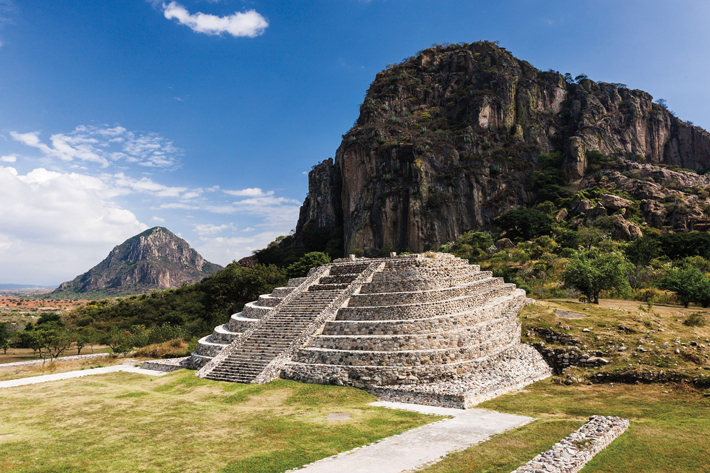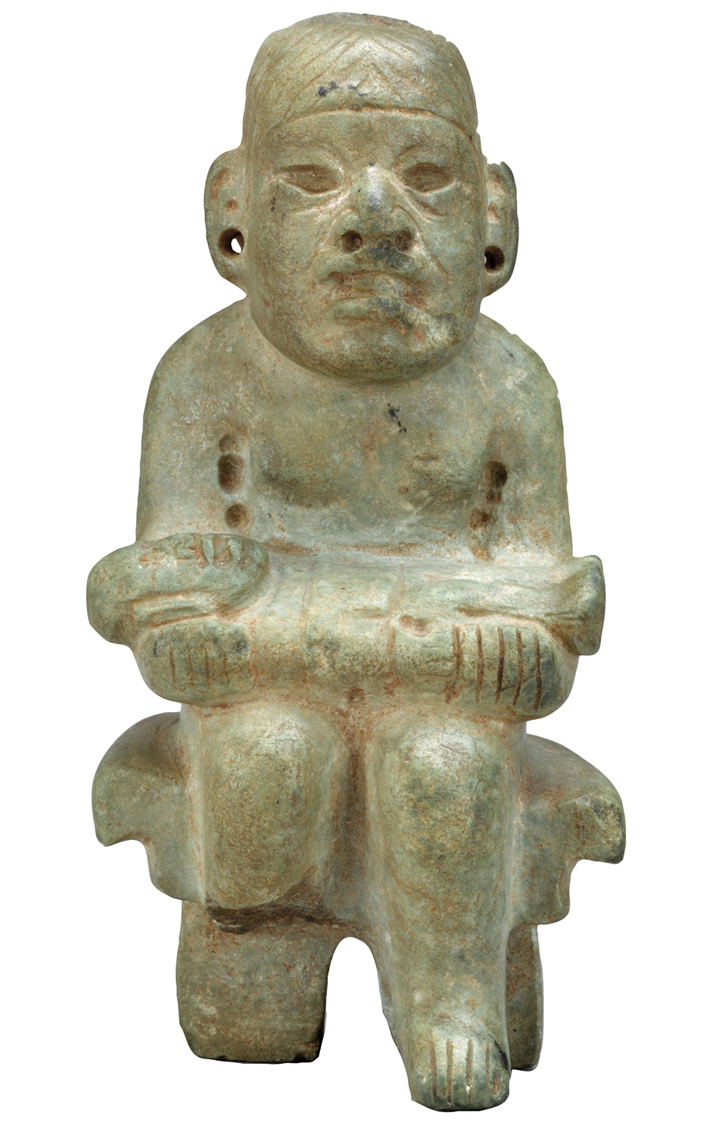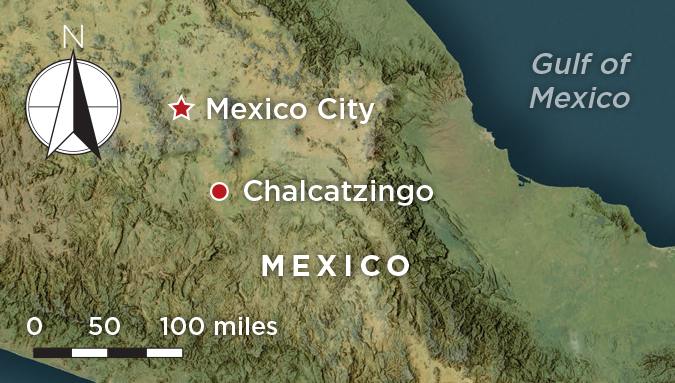Off the Grid
Chalcatzingo, Mexico
September/October 2021
 Located in the state of Morelos some 50 miles southwest of Mexico City, at the base of a pair of granodiorite hills that rise up sharply above Mexico’s central highlands, Chalcatzingo was a regional trade hub during Mesoamerica’s Middle Formative period (ca. 700–500 B.C.). For decades, archaeologists have marveled at similarities between dozens of bas-relief rock carvings discovered at Chalcatzingo and similar examples found at Olmec centers on Mexico’s southern Gulf Coast, nearly 300 miles away. This led many to suggest that Chalcatzingo was an Olmec colony.
Located in the state of Morelos some 50 miles southwest of Mexico City, at the base of a pair of granodiorite hills that rise up sharply above Mexico’s central highlands, Chalcatzingo was a regional trade hub during Mesoamerica’s Middle Formative period (ca. 700–500 B.C.). For decades, archaeologists have marveled at similarities between dozens of bas-relief rock carvings discovered at Chalcatzingo and similar examples found at Olmec centers on Mexico’s southern Gulf Coast, nearly 300 miles away. This led many to suggest that Chalcatzingo was an Olmec colony.
 At its apogee, Chalcatzingo is believed to have covered more than 100 acres and been home to between 500 and 1,000 people. Chalcatzingo’s farmers engineered agricultural terraces and water-control systems on some of the most fertile land in the region. Builders constructed public plazas, and artists lined them with stone carvings depicting deities and mythical events. Individuals shown on the stelas that have been interpreted as rulers of Chalcatzingo appear to channel cosmic and solar powers and act as intermediaries to the gods. Chalcatzingo’s largest monument is a nearly square raised platform measuring some 230 feet on each side. Nearby, a sunken patio with a tabletop altar for religious ceremonies at its center is reminiscent of Olmec-style public architecture. While the Olmec civilization is generally considered to have gone into rapid decline around 400 B.C., Chalcatzingo continued to be occupied through the Classic period (ca. A.D 250–900). There are remains of a ball court and two small pyramid mounds. Radiocarbon dating of evidence from excavations around these structures suggests they were built beginning around the sixth century A.D., when the site was under the influence of the megacity of Teotihuacan, 70 miles northeast.
At its apogee, Chalcatzingo is believed to have covered more than 100 acres and been home to between 500 and 1,000 people. Chalcatzingo’s farmers engineered agricultural terraces and water-control systems on some of the most fertile land in the region. Builders constructed public plazas, and artists lined them with stone carvings depicting deities and mythical events. Individuals shown on the stelas that have been interpreted as rulers of Chalcatzingo appear to channel cosmic and solar powers and act as intermediaries to the gods. Chalcatzingo’s largest monument is a nearly square raised platform measuring some 230 feet on each side. Nearby, a sunken patio with a tabletop altar for religious ceremonies at its center is reminiscent of Olmec-style public architecture. While the Olmec civilization is generally considered to have gone into rapid decline around 400 B.C., Chalcatzingo continued to be occupied through the Classic period (ca. A.D 250–900). There are remains of a ball court and two small pyramid mounds. Radiocarbon dating of evidence from excavations around these structures suggests they were built beginning around the sixth century A.D., when the site was under the influence of the megacity of Teotihuacan, 70 miles northeast.
Dartmouth College archaeologist Deborah Nichols says that a unique ceramic tradition discovered at Chalcatzingo—the creation of anthropomorphic figurines—suggests that the site was not in fact an Olmec colony, but that there was likely direct cultural exchange between Chalcatzingo and the Gulf Coast on an equitable basis. “There were probably some people from the Gulf Coast living at Chalcatzingo, maybe even some marriage and kinship ties, as well as direct trading relationships,” Nichols says. This may explain the similarity in artistic styles.
 THE SITE
THE SITE
Before planning a visit, make sure to confirm the site’s hours, which can be found on the website of Mexico’s National Institute for Anthropology and History. The site is located roughly half a mile outside the modern village of the same name. Chalcatzingo is well worth a day trip from Mexico City, which can be arranged with a tour company. Because the site does not have a great deal of signage, local tour guides are recommended. Apart from the architectural plazas, the pyramid structures, and the ball court, they can show you stelas you might otherwise miss, as well as a number of petroglyphs found on the lower slopes of the hills.
WHILE YOU'RE THERE
The nearby city of Cuernavaca boasts a jewel of a colonial core dating back to the early sixteenth century, including the Palace of Cortés, built between 1523 and 1528. The building is now a museum dedicated to the history of Morelos and features artifacts from Chalcatzingo.